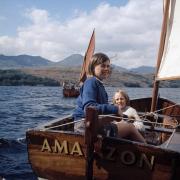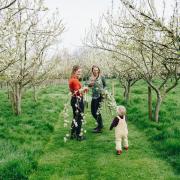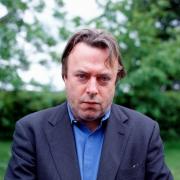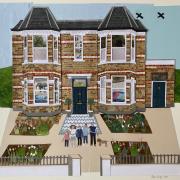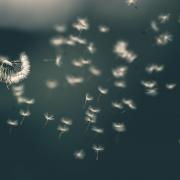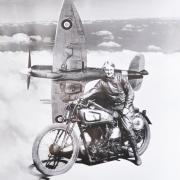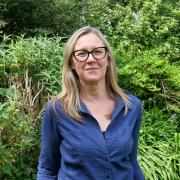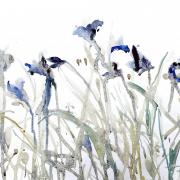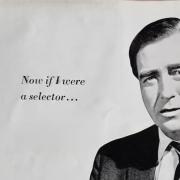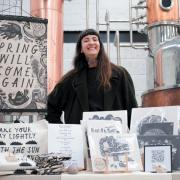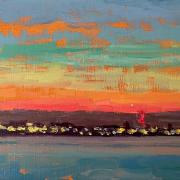In the 1980s, millions tuned in each week to a BBC drama based on Hampshire’s south coast. Sandra Smith meets the designer of its glitzy sets and many others

The 1980s were as memorable for glamour, ambition and a pervading barometer of aspiration determining failure or success as they were for power dressing and brick mobile phones which have since become a cult retro must-have.
Ostentatious this decade may have been yet, let’s be honest, how eagerly we grasped opportunities to steep our lives in glitz. Television dramas played a vital role in reinforcing such trendy excesses. No sooner had the BBC launched a series to rival glossy American sagas than Sunday evenings epitomised the excitement of the era. Howards’ Way, located amid the south coast sailing community, flooded the nation, celebrating style, romance and intrigue whilst showcasing Hampshire at its most desirable.
Although the county was chosen for location scenes, with opening sequences of beautiful yachts effortlessly manoeuvring in and out of harbour, this long running production’s indoor sets were designed and built more than 130 miles away at BBC’s Pebble Mill Studios.
Set Designer, Lynda Kettle, who created many of the interiors, recalls the excitement of working both in her home city of Birmingham and on the south coast.
“During filming around Lymington and Hamble we’d all stay in a hotel in Southampton and go out for dinner in the evening. I got to know the actors and they became friends. We had wonderful times together.”
This vivacious, creative, former Vice President of the Royal Birmingham Society of Artists, whose Birmingham University pastels are popular amongst graduates and whose passionate seascapes reflect her dramatic flair, was influenced in her career choice by a sympathetic teacher.
“I was always better at art than anything else. My art teacher, also a theatre designer, took me to the Birmingham Repertory Theatre. I thought, I’d like to do that! I did O Level Craft Theatre Design then went to the Birmingham School of Theatre Design. In those days the subject didn’t have much status but all our practice was done in theatres and Birmingham was one of the country’s main centres.”
A stint at the Midlands Art Centre developed Lynda’s skill at technical drawing. Then, aged 20, a temporary vacancy led to a lasting career.

“I met a friend who worked at Pebble Mill. She said I was brilliant at technical drawing and asked if I would fill a three month art director vacancy. This became a temporary contract for two years which turned into a permanent post. I stayed for 30 years. There were 27 designers and we ran shows back to back. I worked on major television series and, as set designer, was in charge of the whole look of a programme. Pebble Mill was then a centre of excellence.”
Our conversation gushes with memories of numerous productions in which she was involved including The Brothers starring Kate O’Mara, sitcom 2Point4 Children and the daytime success Good Morning with Ann and Nick before we return to the practical aspects of Howards’ Way.
“I’d go to a location with directors and cameramen and choose where to film. As actors enter a building we cut to the studio so I’d plan a set such as the yacht club.”
Plans included pencil sketches on tracing sheets with hand written notes and models in small form for approval by the directors. Door styles (handles were hired), window positions and wallpaper were all detailed. During initial rehearsals, which Lynda watched, tape on a studio floor indicated a room’s layout. With details and logistics confirmed, the building of a studio then commenced in the manner of a jigsaw puzzle, separated into flats just as in the theatre. The final step involved dressing the set before actors arrived for a recording. Outdoor shots and sets were combined during editing.
“We’d hire props from London,” Lynda explains, “which would be on loan for several weeks. You have to be really careful with continuity; if you make a mistake the public will let you know.”
Although outside scenes always appeared to coincide with summer Hampshire days, filming took place throughout the year.
“I’ve worked on many productions where I’ve stood outside in the freezing cold!” she laughs.
One of the most crucial elements for any set designer is familiarity with the script.

“For instance, when Jack Rolfe talked to Avril I’d need to know whether it’s a close up or group shot. If several of the cast are sitting around a table filming includes face shots of everyone so there might be pictures removed from one wall in order for the camera to film through the hole.”
Guernsey and Malta were also film locations for this iconic series. When Jan Howard (Jan Harvey) moved from fashion into perfume her new product was launched in Malta, though Southampton Civic Centre was impressively redressed as the island’s airport.
However, not all scenes revolved around fashion shows or legendary inns.
“At the end of one series Leo Howard falls overboard from a boat, Xanadu. When I read through the script I wondered how to do this but decided on a film studio in a tank. This is like a swimming pool but 4’ deep and by the sea. We built a boat, put it on rockers in the water then tipped the tank and used rain machines. Viewers were left wondering whether he would survive the next series.”
The Mermaid Boat Yard and Jolly Sailor pub soon became as recognisable to viewers as the elegant theme music from the series. Both locations were chosen for their views of the sea and closeness to marinas, thereby allowing many options for exterior shots.
As Lynda continues to mourn the loss of Pebble Mill I’m intrigued to learn not only about juggling family life with a career at the BBC but, back in the day, the organisation’s attitude to working mums.
“It was very male dominated then. My female boss had no children and when I returned to work after having my daughter my boss said it would be advisable not to talk about my child in the office; being a mother as well as working full time on productions was seen as unacceptable.”
With a number of skilled men accountable to her, Lynda wisely used diplomacy in building relationships, for example asking carpenters for advice before doing technical drawings rather than demanding they did things her way. The approach worked: “They became my friends,” she muses, “and the women helped each other.”
Such success is down to more than skill and professionalism, however. She readily acknowledges domestic help from her supportive husband and mother in law and chuckles at the memory of her son once remarking that he believed his father was the only adult in the house who could cook.
Although now living a mere couple of minutes from the sea, this energetic artist retains membership of the Birmingham Watercolour Society and indulges a lifelong passion for painting whilst her talks about life in theatre, TV and film are in demand. I’m not surprised. Talking to Lynda has done far more than fill me with awe and enthusiasm about her technical ability. It may have been over two decades since Howards’ Way filled our screens, but right now I’m overflowing with fond memories of this iconic television series.




